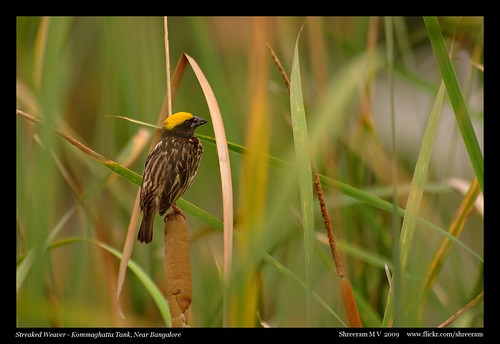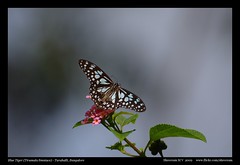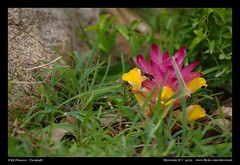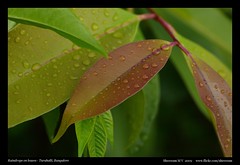Just as we got off NH4, we came across a pond on our left side. On our right side was a rocky landscape, with a pair of Egyptian Vultures sitting atop. What a way to start the day! We trekked up the rock in an unsuccessful pursuit to photograph them. On our way down, a large dark-grey/brown bird with a long tail disappeared into a nearby tree. We tried to get close but it flew and landed on a rock. This was my first sighting of a Sirkeer Malkoha around Bangalore. Also, it was of a greyish brown color, compared to the pale brown ones that I had seen in Kanha.
Along the way, we saw a Common Hawk Cuckoo on a wire next to the road. It was mobbed by bulbuls very soon and flew to the safety of a mango grove nearby. A pair of eagles were jousting in the air and attacking each other with their talons.
Maidanahalli itself was fascinating and a tad disappointing.
First, the fascinating part. The grasslands are truly a sight to see. Rolling on unevenly, the sway of the grass is a treat to watch. Add a herd of blackbucks and it is magical.
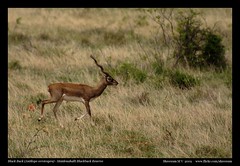
We saw herds of blackbucks ranging from 5 to 20 in numbers. They are very very shy and wouldn't let you anywhere close-by. The photograph above was shot from the forest department "pagoda" where we were resting after lunch. This lone male wandered close-by and allowed us a few shots before bounding away. Soon after, we also saw a hare bounding along the grasslands around the same place.
Birding was also awesome here. We saw a green bee-eater with a butterfly, taking its own sweet time to stun its prey and then swallow it in one gulp! Larks allowed us to get very close in the car and would then do a superb parachuting display and land close-by. We also saw a family of Yellow-wattled Lapwings with 2 juveniles. A huge number of lifers too - Southern Grey Shrike, Red-collared Dove and a flock of Grey Francolins - to make the day for me.
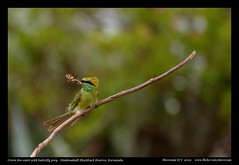
About the disappointing part, the sanctuary blends seamlessly into nearby villages. A 360 degree scan of the landscape never presents itself without agriculture in the backdrop. This causes a few issues, primarily grazing cattle and sheep in the sanctuary. A shepherd came up to us in the pagoda and started playing loud music on his mobile! What was saddening was that the blackbucks have to wait their turn while the sheep drink water from their water-hole. On our way back, we saw blackbucks venturing very close to farms in the villages around. A real pity!
How to get to Maidanahalli? - Maidanahalli is around 150km from Bangalore (a good 4-5hr drive). Drive to Tumkur. Beyond Tumkur, there is a diversion to Madhugiri (the locals would help you out with the exact road). Beyond Madhugiri, ask for directions to Jayamanagali forest or Maidanahalli.
A word of advice on planning a trip - Do a 2-day trip. Try to get Forest Dept permission to stay overnight at their forest bungalow. If you are successful, drive to Maidanahalli after lunch on Day 1. Check out the park and the wildlife till sunset. Spend the night there (you need to carry your own food). Do early morning birding and wildlife-watching. Have breakfast and start back to Bangalore.
Links:
List of Birds
Photographs

